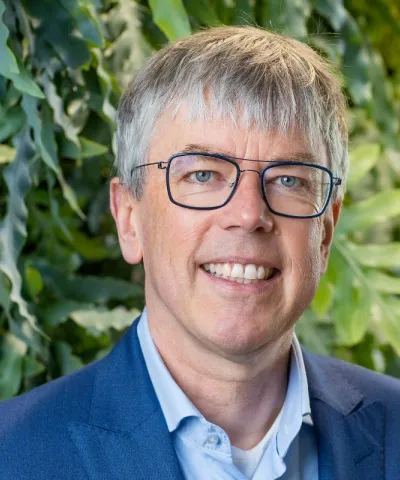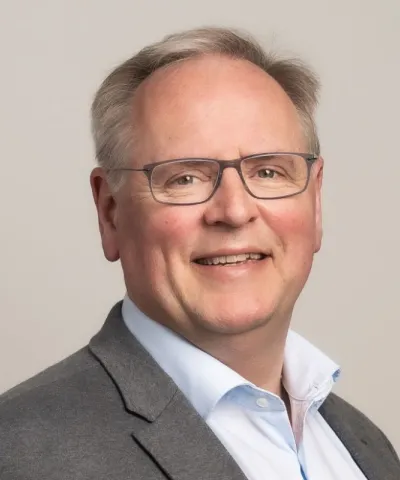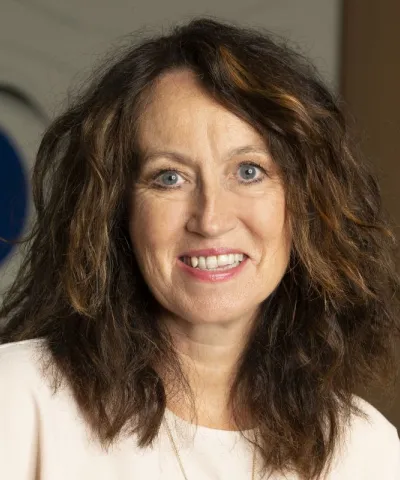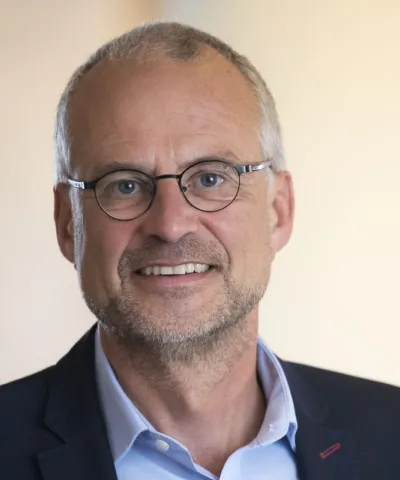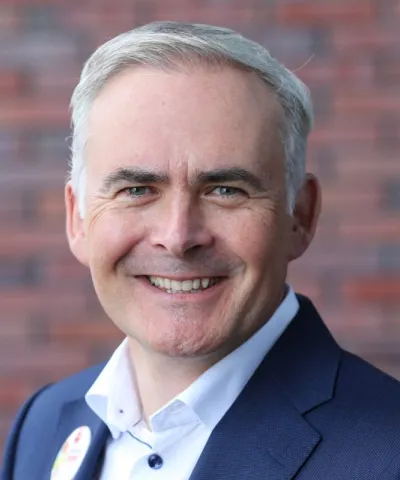Enabling consumers to make sustainable choices step by step
In the past, supermarkets seemed to revolve mainly around lower prices and discount promotions. Although customers are still price-conscious in their everyday shopping, a shift in value drivers can be observed. In addition to quality, taste and shelf life, sustainability is becoming increasingly important.
This is increasingly reflected on today’s shelves in all the different product ranges. In fresh produce departments, for example, an increase in organic alternatives can be seen, with both quality certifications and labels on the front of almost all packaging. You can also see more and more cheerful slogans in other communications that point to sustainable production and conscious choices.
Joined by Marit van Egmond, CEO of Albert Heijn Supermarkets: A conversation about the roadmap to sustainability and the importance for supermarkets to offer choices to consumers.
When talking about sustainability, what do you focus on most right now?
“Sustainability is a very broad concept to me. On the one hand, this is about the sustainable production of products, in a responsible manner. That goes a long way because it concerns the entire supply chain. From farm to fork so to say. We look at whether the ingredients of the product are produced in a sustainable manner throughout the entire supply chain. And to the ingredients themselves. With that, it’s important where the products come from, as the demand for closer to home is growing. On the other hand, it’s also about fresher, more varied and healthier food, and drinks and therefore about selling products that promote a healthy lifestyle. Nutrition determines how you feel, both physically and mentally. More and more customers are convinced of this, including me.
“Consumers increasingly weigh in sustainability and health in their choice of supermarket and product.”
In today's society, with so many opinions and focus on the differences, food also has great bonding power. Often in our busy lives, a meal is a moment of rest to reflect on yourself or your family. In many households in the Netherlands, dinner is the time to go over your day and take a break from the phone for a while. The way I look at it, this is part of a sustainable society as well. In all these areas, I can see that consumers increasingly weigh in sustainability and health in their choice of supermarket and product.”
What evidence do you see in practice that consumer awareness of the environment is changing?
“I can actually see that reflected in our sales. Our customers are increasingly asking for produce closer to home, from the Netherlands or even more specifically from their own region. In addition, the demand for free-range chicken and vegetarian alternatives is growing. Now that trend has been going on for some time, but this mainly revolved around sustainability of the raw materials and ingredients themselves, in other words, where does my fish or my cocoa come from? As time goes by, I can also see a growing awareness about packaging and transport. Plastic, for example, is increasingly seen as the culprit. Awareness is growing broader and it’s also a topic of conversation on the street, in the playground or during dinner with friends. It Is growing beyond what you buy and eat today, but also about the impact on the world you leave behind for the next generation.
In more concrete terms, today I see more and more customers choosing plant-based foods. That’s a major change compared to a decade ago. The group of flexitarians already existed, but it has continued to grow. An occasional day without meat or with a meat substitute has become the new standard. And we can see a growing group of people who eat fully vegetarian or vegan. Not only in the big cities with many students, but throughout the Netherlands, from Friesland to Zeeland.
This signals more consumer awareness. When people had to think about what they were going to eat, they started with meat or fish. Now vegetables are often the main part of the dish. That is a huge change in behaviour. This is also reflected in the quantities. Whereas it used to be one third meat, one third vegetables and one third carbohydrates per meal, the share of vegetables has now grown considerably. This shift awareness and the associated change in behaviour has had a major impact on health and the environment.”
To what extent does this affect your product assortment and the positioning of those products towards the consumer?
“We must ensure that everyone in the Netherlands has access to all the ingredients that contribute to a better environment and a better life. For me, the emphasis is on doing this for everyone. Whereas one person is fully committed to a vegetarian or organic lifestyle, the other thinks the switch from beef to chicken is a step in the right direction. Both are good choices, and that sometimes complicates sustainability. It is important to realise that a step in the right direction can also be contradictory.
What is good for the environment is not automatically good for animal welfare. I therefore believe that we can achieve the greatest impact for our customers by offering choices and providing information. This allows everyone to take a deliberate step in the way that suits him or her. That is, if you want to take a step at all. I don’t really believe in patronizing and telling consumers what to do, that doesn’t fit Dutch culture. Nor will it really be accepted if a supermarket adopts a paternalistic attitude and determines that the consumer can only choose from organic variants. Freedom of choice is a great asset that we must preserve. Personally, I think that positive incentives and an appealing perspective create a much more lasting behavioural change, so that together we can make a structural impact in the field of sustainability.
“Positive incentives stimulate a lasting behavioural change”
At the same time, we as an industry have a responsibility to inform, motivate and enthuse customers. Which is exactly what we do, for example in the field of health with sugar labels on the shelves. Plus, we have been adapting our products for some time now; a little less salt, sugar and fat each year. Food patterns become healthier and we are getting used to a healthier, purer taste, without even noticing.
The challenge with sustainability is that the perception of what’s good and what’s not changes quite a bit. It evolves as a result of increase in knowledge, but can sometimes also get a bit hype-like. Currently, everyone thinks that plastic is the worst thing there is, while the facts (e.g. LCA analyses) in some cases prove that plastic actually is a better alternative than glass in terms of environmental impact. It’s therefore my firm belief that there’s no universal truth in terms of sustainability. It’s a journey in which you make the world a better place, step by step. And all those steps together make a big leap.”
“Sustainability is a journey in which you make the world a better place, step by step. And all those steps together make a big leap”
Shouldn’t you sometimes give the consumer a nudge in the right direction to take the next step?
“Yes, I think we should. In fact, we at Albert Heijn have already succeeded several times in introducing the Netherlands to new habits. From kiwi to fridge. Particularly given our scale, I feel empowered to help customers with this, but in such a way that we enable everyone to take that next step. And with an eye for everyone in the chain. At Albert Heijn, for example, we are the first in the market to have developed a progressive programme for all our fresh produce, together with our farmers and growers with whom we have worked for generations. These programmes, called ‘Beter voor' - Programmes, contain strict requirements for measures with regard to animal welfare, impact on nature and the environment, but are also based on a transparent and healthy revenue model for the farmer. Farmers and growers are rewarded extra for all their additional efforts on sustainability. For example, our entire private label dairy range fully complies with these standards under the ‘Beter voor koe, natuur en boer’ programme. The same applies to strawberries which, incidentally, are grown in the Netherlands all year round. Another example is that we are forerunners in offering at least one star 'beter leven' chicken meat in all our branches.”
Will consumers also see this reflected in the price?
“That varies a lot, some measures don’t necessarily cost more, others do. What remains important is to keep food, and especially healthy and sustainable food, accessible and affordable for everyone in the Netherlands. Truth be told, precisely because of initiatives like the ‘Beter voor' - Programmes, we are not the cheapest. And as crazy as it may sound... I’m beginning to take pride in it now. Well-produced food deserves to be valorized appropriately.
Apart from specific programmes on product groups, I do believe that making the change to more environmentally friendly alternatives does not necessarily need to be more expensive. There are plenty of examples of innovative, technological breakthroughs, such as packaging or dry misting, in which an improvement in sustainability is not instantly more expensive. Especially not if we reach the right scale.”
We really see cooperation across the supply chain management as a recurring subject in the Netherlands. How do you maintain such a balance with international suppliers of branded products?
“I’m responsible for the supply of all products on our shelves. But A-brand producers make their own decisions of course, also with regard to their recipes and production processes. That’s their responsibility. At the same time, we maintain a dialogue, because we can only make a structural and positive impact on the environment if we all take steps and listen to each other. And what we also do, of course, is to ensure that customers know how products are made, including national and international A-brand products. And that goes further and further, also when looking at CO2 impact. It’s precisely with this that you make a significant difference in awareness and in what customers buy.”
Hence, customer awareness is crucial. Do you think customers currently have the right information to translate that awareness into a sustainable purchase?
“Customers are increasingly reading the packaging and I must admit, it’s full of different labels and slogans. Their intention is of course good, and I support their use.
But nowadays there are so many labels, even differing per country. All this while products come from all over and are produced in different countries. That makes it difficult for customers to understand. I would like to move towards a clear standardized label per theme, so for example one quality mark for health, one for impact on the environment and one for animal welfare. And then roll this out across Europe. Our food sector, the entire supply chain, doesn’t stop at our national borders. We need to offer clear and transparent information, enabling consumers to make conscious choices without us taking away their freedom of choice. The government can and must play an important facilitating role in setting up such a central approach.”
Looking towards the future, which sustainability problems do you think should we solve together?
“Personally, I think food waste is an important theme. Everyone needs to know that food has value. And that food being available is not a given. Wasting food is such a shame when you think that so much love and care goes into making good food. That also affects the value of the product.
Packaging plays a crucial role in reducing food waste. At the same time, the sum of all packaging still has too much impact on the environment. So that’s an exciting challenge right there. Not only for the industry and the producers, but also for the way in which we collect, process and reuse packaging. There are still many steps to be taken to understand the latter even better. There are currently considerable differences per municipality in the Netherlands about what you may and may not recycle. That makes it unclear for the consumer. I think that a structurally sustainable solution for packaging is still one of the most complex issues. We must really tackle that together, with the government, the industry and with consumers. Therefore, collaboration across the entire value chain also remains crucial for the future.”

